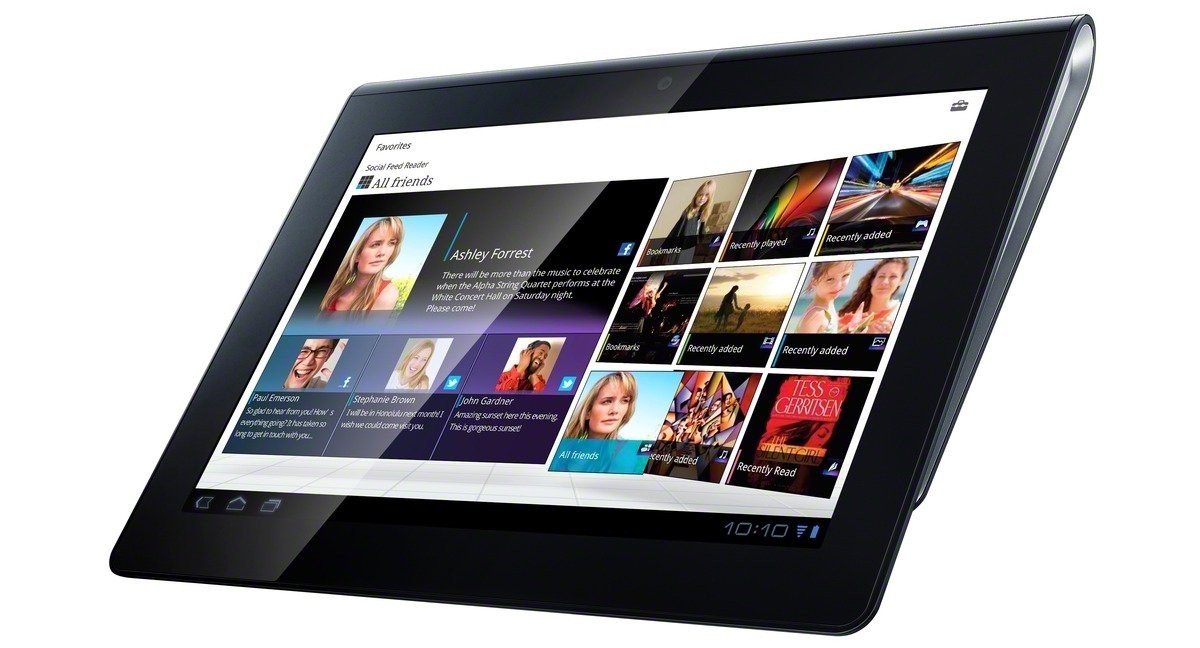A while back, Sony teamed up with Ericsson to enter the world of mobile phones. They found success with feature phones that focused on things like cameras and music. However, their journey with the Symbian operating system wasn’t as successful. Eventually, they settled on Android for their future devices.

Alongside their phones with Ericsson, Sony released its own devices in 2011, including a pair of tablets. This was just before Sony bought out Ericsson’s share in the joint venture.
One of these tablets was the Sony Tablet S, which ran on Android Honeycomb, an operating system designed specifically for tablets. Its unique design resembled a folded magazine, with one end being thicker (20.6mm) and tapering towards the other (10.1mm).
Sony claimed that this design made it more comfortable to hold with one hand. The tablet featured a 9.4” TFT LCD display with a resolution of 1,280 x 800 pixels (16:10 aspect ratio) and weighed 625g.
The display and stereo speakers highlighted Sony’s focus on multimedia. The tablet came pre-loaded with apps like Music Unlimited and Video Unlimited, along with a Sony Reader app for reading ebooks. It also had an IR blaster for controlling home entertainment setups and DLNA for wireless content streaming.
Sony’s gaming division left its mark on the Tablet S. The tablet came with pre-loaded games like Crash Bandicoot and Pinball Heroes from the original PlayStation. It was “PlayStation Certified,” which meant it had an official emulator and store for purchasing and playing games from the PSX library.
The Nvidia Tegra 2 chip was powering the Tablet S, featuring a pair of Cortex-A9 CPU cores clocked at 1.0GHz and a GeForce GPU. It also received an update that allowed it to connect wirelessly to PS3 DualShock controllers, offering a more traditional gaming experience.
However, Sony decided to change its approach in 2012. It removed classic PSX games from PlayStation Mobile and aimed to offer original content through partnerships with various game developers.
The Sony Tablet S was part of Sony’s efforts to conquer the mobile market, a rapidly growing industry. Despite these ambitions, the tablet didn’t make a huge impact. It was one of the two tablets introduced in 2011, with the Sony Tablet P being the other. The Tablet P had a unique clamshell design with two 5.5” displays and was also PlayStation Certified.
Sony’s attempts in the portable gaming market, including the PSP and PS Vita, faced challenges in competing with Nintendo’s portable devices. The Xperia Play, Tablet S, and Tablet P didn’t gain widespread popularity as gaming devices and general tablets. Android tablets in 2011 faced stiff competition from Apple’s iPad, and the Android tablet market has struggled to gain ground ever since.
As gaming tablets like the Red Magic and Acer Predator 8 emerge, Sony’s early efforts seem ahead of their time. The Android ecosystem and mobile chipsets have evolved, and if Sony’s upcoming Project Q succeeds, we might see the company take another shot at creating unique tablets with PlayStation features.
